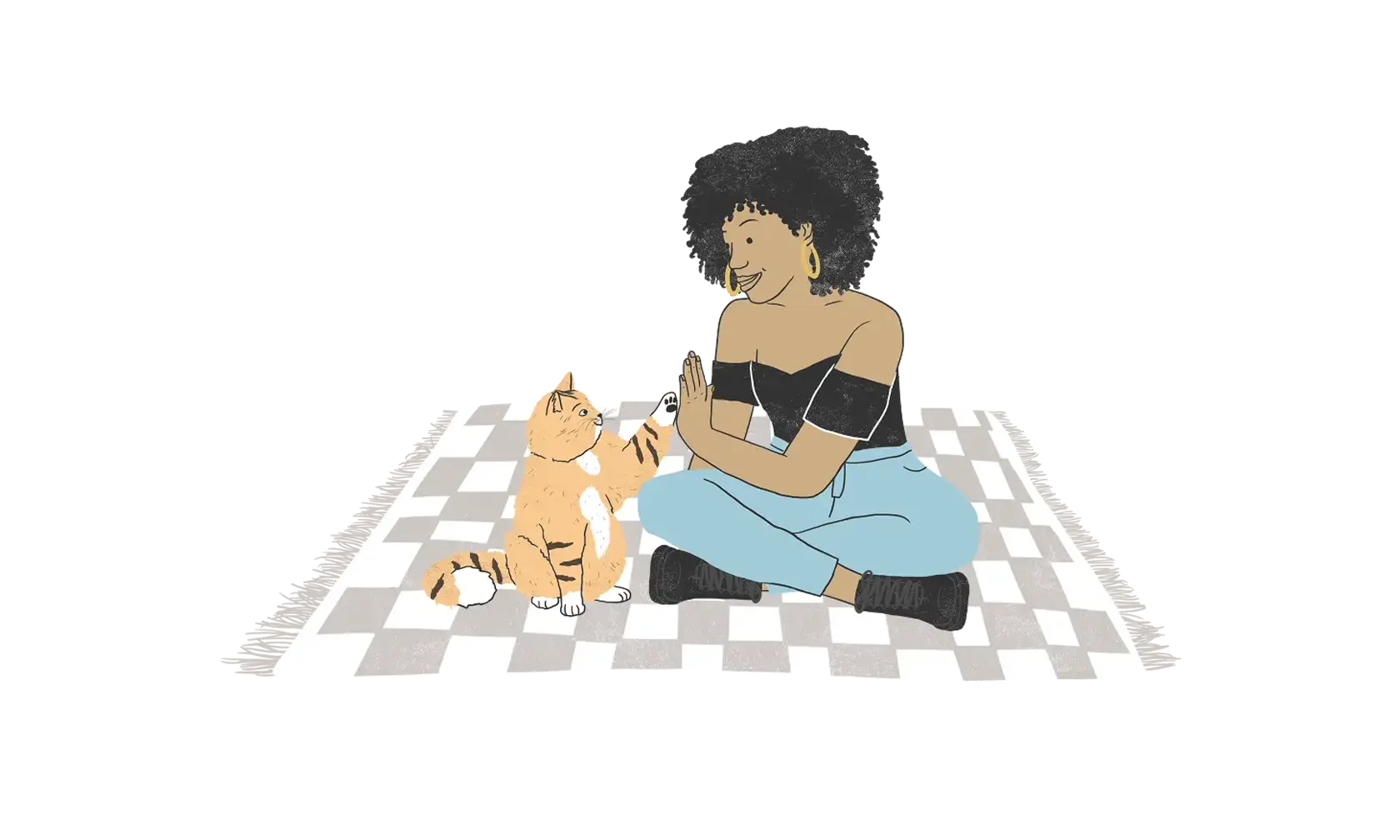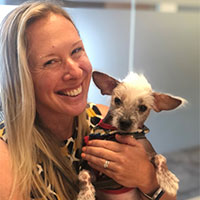Have you ever noticed how dramatic your cat's eyes look? Unlike dogs or humans, cats have vertical slit pupils that shift size and shape throughout the day. These changes are more than just lighting adjustments — they can reveal a lot about your cat’s mood, instincts, or even health.
Let’s break down what those eye changes mean.
Pupil Shape
A study in 2015 looked at why animals had pupils of different shapes. It found that animals with vertical pupil shapes, like domestic cats, were predators who were active both day and night.1 This may surprise those of us with cats who seem to be active all night. This shape helps cats notice the quick movements of their tiny prey, such as rodents. Large cats, such as lions, tigers, and mountain lions, have round pupils because these cats hunt during the day.
Large Pupils in Cats
Cat pupils normally enlarge to allow increased light to enter the back of the eye when the surrounding area is dark. The pupil will also enlarge when your cat is hunting or play hunting to increase their ability to see more clearly. This is also why the pupils enlarge during a fear response. This large pupil is known as "dilated." The increased access to light helps your cat to see better when they need to escape or fight a predator.
Here are the most common reasons your cat's pupils will dilate:
- Darkness, such as a dark room or nighttime
- Being scared
- Playing or hunting
- Excitement
There are also medical reasons your cat's pupils may dilate. If you notice your cat’s pupils staying dilated for no reason, you should call your veterinarian.
Medication
Opioid medications and are known to cause dilated pupils in cats.
Poisons or Toxins
Common poisons that cause dilated pupils include ADHD medications, muscle relaxants, marijuana, and pyrethrin flea/tick control medications.
Retinal Detachment
This can occur in cats with high blood pressure, especially those with chronic kidney disease or hyperthyroidism.
Blindness
If this occurs, you may notice your cat bumping into things they usually see, meowing because they're disoriented, not eating well, hiding, or other behavior changes.
Progressive Retinal Atrophy
This is an inherited disease in Abyssinian and Persian cats, the first signs of which are night blindness and dilated eyes. Affected cats will ultimately become blind over the next one to two years.
Feline Dysautonomia
This is a dysfunction of the autonomic nervous function. Symptoms include dilated pupils, elevated third eyelids, food regurgitation, muscle loss, difficulty urinating, and weakness.
Thiamine (Vitamin B1) Deficiency
This vitamin deficiency can occur in cats on homemade diets, causing vision changes, dilated pupils, tremors, and seizures. It's reversible once the cats receive vitamin B1 injections and return to a diet supplemented with vitamin B1.
Small Pupils in Cats
Small pupils, known as "constricted," are a result of your cat's vertical pupil narrowing into a slit when exposed to bright light so they can see just the tiniest amount of light necessary.
Common reasons for constricted cat pupils include:
- Bright light. In vivid sunlight or a brightly lit room, the pupil constricts to regulate that light.
- Happiness. Some blissful cats have very small pupils.
- Anger. An aggressive cat may have slit-like pupils just before striking.
There can also be medical causes for constricted pupils, such as:
- Inflamed and painful eyes. Cats with uveitis (inflammation of the eye between the retina and the clear cornea) and severe corneal ulcers may have small pupils.
- Medications. Some topical eye medications will cause the pupils to constrict.
Unequal Pupils in Cats
Unequal cat pupils should be evaluated by a veterinarian. In nearly all cases, pupils should be equal in size and should both change in size when exposed to light. You should take your cat to your veterinarian if you see this.
These are some causes of unequal pupils in cats.
Iris Atrophy
In senior cats, the edges of the colorful part of the eye (the iris) can wear away. This makes the pupil's edges appear ragged, and the pupils may appear slightly unequal in size. This is a normal aging change.
Medications
Some eye medications can change pupil size. If the medication is given in just one eye, this can create uneven pupil sizes. If you notice a change in just one pupil after giving eyedrops, check with your veterinarian to ensure this is normal.
Head Trauma
Any cat who has sustained a bump to the head or neck and now has uneven pupil sizes should be evaluated by a veterinarian immediately. Uneven pupil sizes are an early sign of brain swelling, which can quickly become life-threatening without treatment.
Inflamed Eye
Cats with uveitis (inflammation of the eye between the retina at the back of the eye and the clear cornea at the front) and severe corneal ulcers may have a small pupil in the affected eye.
Synechiae
Scarring of iris to lens or iris to cornea (iris adhesions) in an eye that has previously been inflamed can change the size and shape of the pupil.
Horner's Syndrome
In this syndrome, the cat develops one small pupil with a sunken eye and a raised third eyelid on one side of their face. On that same side, the eyelid and the skin where the cheek meets the nose may look droopy. The other eye and side of the face appear normal.
Horner's syndrome often has no known cause, but can be due to head or neck trauma, ear infection, or a mass somewhere in the skull, head, neck, or chest.
Glaucoma
In this condition, a cat’s eye develops high internal pressure due to fluid retention. The pupil dilates, and the eye reddens and becomes painful as the pressure rises. One eye is often affected first, so your cat may have one dilated eye and one normal eye. If both eyes are affected, both eyes will be dilated.
Eye or Brain Tumor
A tumor in the eye or brain may cause one eye to dilate and become red with possible discharge while the other eye remains normal. The cat may also have lethargy or behavior changes.
Iris Coloboma
In this rare inherited disorder, the edge of the pupil has an area where the pupil is thinned or may have an indentation, causing a misshapen pupil. Cats with Iris coloboma are very sensitive to light, so these cats should remain indoors for life.
Cat pupils change in size countless times throughout the day. Typically, there are other signs, such as lethargy, squinting, eye redness, eye discharge, or a history of trauma or toxin exposure, when a medical cause exists. If you are concerned that your cat's pupils are abnormal, a veterinary examination as soon as possible is always best.
ZPC-04391
- Why do animal eyes have pupils of different shapes? Science Advances. https://www.science.org/doi/10.1126/sciadv.1500391#:~:text=Species%20with%20vertically%20elongated%20pupils%20are%20very%20likely%20to%20be%20ambush%20predators%20and%20active%20day%20and%20night. Accessed June 2, 2025.



